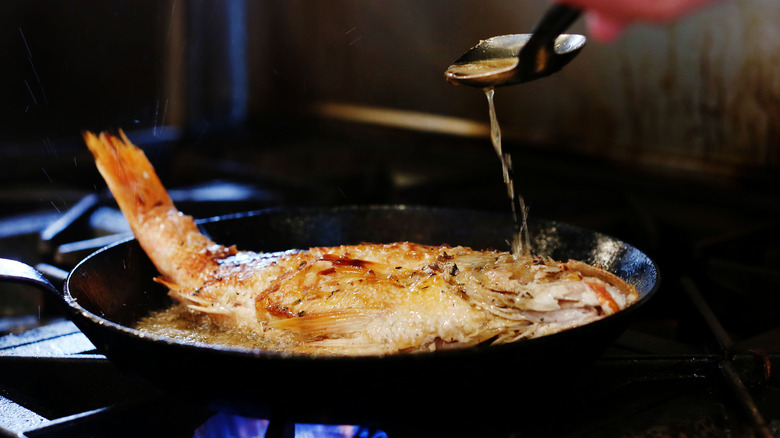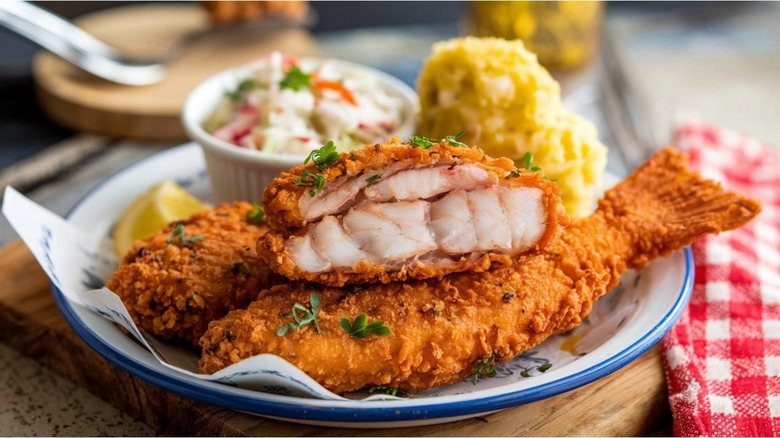The Most Important Thing To Keep In Mind When Frying Batches Of Fish
If you're not incorporating fish into your diet, then you're missing out. Fish is high in protein, and different types offer various important nutrients. Plus, cooking a fish fillet is easy. You can bake it in the oven, steam it on the stove, or even deep fry it for extra flavor. But if you go the frying route, there are a few rules of thumb in order to get the crispest, tastiest fish possible. Most importantly, don't fry your fish in large batches.
If you're cooking a type of whitefish, such as cod or haddock, then you can expect a mild flavor; these fish fillets are often battered and fried for that reason. But when you place any fish in oil, whether it's battered or not, the fish reduces the oil's temperature. Adding too many fish fillets to the oil means the temperature will drop significantly and take longer to get back to that ideal frying temperature. As a result, the fish's exterior won't crisp properly, leaving you with soggier fish.
Avoid frying fish in large batches to ensure crispness
When it comes to frying fish, the oil temperature is paramount. A neutral oil with a high smoke point, such as canola oil, is the best oil to use because it won't burn. To fry the fish, make sure the oil is somewhere between 350- and 375-degrees Fahrenheit. An easy way to check the temperature without an oil thermometer is to toss a little flour into the pan; if it immediately starts to bubble, the oil is ready for frying. You'll also notice ripples in the oil and a sheen once it reaches the right temperature.
Fry the fish one fillet at a time. If that temperature drops too low, the longer cooking time means the fish absorbs more of the pan's oil, leaving you with the wrong flavor and texture. Don't cover the pan with a lid while the fish cooks, and never cover it while it cools, either. Leave it exposed to air to ensure the condensation from the hot fish doesn't turn it soggy.

